Floorball is a young sport, easy to start, hard to master. Do you want to get better at it? Then read our five tips.
There are few sports as accessible as floorball: you can play it right away without having to practice it first. But becoming a pro like Joonas Pylsy or Corin Rüttimann, that’s something else!
The pros have practiced, for years and years, and that’s probably what you’re doing too. I’ve been playing myself for about eight years now – before that time I didn’t even know that floorball existed – and there are still so many things I want to get better at.
“So what are these easy ways to get better you promised us?”
I’ve made a top 5 of points that often go wrong in training sessions and matches, but that can be improved very easily. Little effort, lots of results! So read on.
The 80/20 rule
One more thing I’d like to mention before I start off with the 5 tips is the Pareto principle, or the 80/20 rule, which states 80% of the effects come from 20% of the causes.
So?
What if… you can become a FAR better floorball player than you already are, by only focusing on a few major pieces of advice?
The five tips to become a better floorball player
Tip 1: Never stand still
As you know, floorball is fast, dynamic and explosive, and you have to go along with it. During a game, teammates alternate continuously, and such a shift usually only lasts for a maximum of one minute.
Think of this minute as one long action, in which you walk free, conquer the ball, pass, make yourself playable, sink back into position, start a counter and so on. Standing still? No way! When there are five players on the field, you block the whole pattern when you stand still, bringing the machine called ‘your team’ to a stop.
So make sure you’re always moving. Of course, this doesn’t mean that you have to sprint for a minute – even moving slowly is moving – but be aware that you can’t walk freely if you’re standing still, you can’t cover your man well and you can’t create any goal chances.
“But where should I run to?”
We can’t answer this question for all situations. But what I want to show by using the image below is that sometimes you don’t have to do much.

You are the lowest blue X, our highest-standing forward on the half of the opponent. We own the ball on our own half and you are standing close to two defenders. If you can now keep these two defenders busy, our team is actually playing in a surplus: 4-vs-3, which is highly beneficial for our attacking game!
How do you keep both defenders busy? By moving only a few meters at a time, from left to right, back and forth. You are still listening to tip #1, as you are moving non-stop until your team has brought the ball into the opponent’s half, at which time to decide to make yourself available at some other place on the pitch.
Not yet convinced? Then try to pay attention to the following during the next game you’ll be playing: when your opponent is stationary, it is much easier to defend or pass than when he is moving. From now on, standing still is out of the question!
[ppp_non_patron_only]As much as we love floorball, we dedicate a lot of time and money to the FloorballToday project (more info here). That’s why we ask you for a small monthly donation. By clicking the button below you can become one of our supporters and read the rest of the article. Thanks a lot! [/ppp_non_patron_only][ppp_patron_only level=”6″ silent=”no”]
Tip 2: Stick to the ground
It was a fantastic counter: you captured the ball deep in your own half and put it wide to a teammate. While he outplayed an opponent, you were already on your way to the goal. Your teammate handed you the ball and another teammate came free to your left. The pass is perfect, but… he doesn’t have his stick on the ground and it’s too late – the ball rolls by and your team missed out on this huge opportunity.
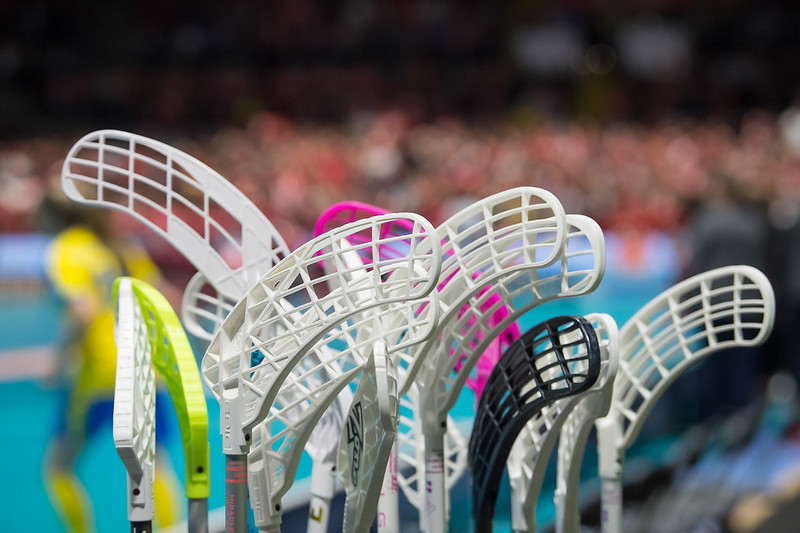
What went wrong? It might be obvious, but unfortunately, we often see it happen. Teammates don’t have their stick on the ground, but pointing in the air. Running is a lot easier this way, but make sure you are aware of it, to be quick enough to put your stick back on the ground again.
Near the goal, whether it’s the enemy goal or your own, you always want to have your stick on the ground. How often does it happen that the ball accidentally hits your stick while in defense? This wouldn’t have happened if your stick was in the air!
Floorball is fast, sometimes faster than you can keep up with your own response capability. If you have your stick on the ground at dangerous moments, both in attack and in defense, this saves you one more action – perhaps a crucial one.
Tip 3: Footwork
Your attitude in the field is essential. A firm posture is not necessarily the best posture. Check out the left boxer:
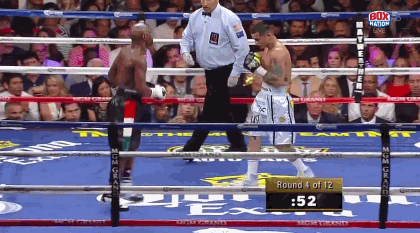
He never stands still (tip 1), but more importantly: he moves on his forefeet. The footwork of a boxer is very light and you can also use this in your floorball game. Because agility is very important in floorball, it’s good to stand on your forefoot a lot, instead of your ‘whole’ foot.
You are more agile on your forefeet and can accelerate much better, two points that can give you a lot of advantage over your opponent in the game. Try it during training, while feinting or when an opponent passes you with the ball: you are faster and more agile on your forefeet
Tip 4: Two hands on the stick (+ bonus)
This tip is again about the stick, just like #2, but in this case, it’s about holding the stick. It is sometimes easy to play with one hand on the stick, for example during a counter, but in general, we recommend holding two hands on the stick.
There are several reasons for this. First of all, ball control is much and much better. Try it: take two pawns, your stick and a ball, and play the ball around the pawns for half a minute – with one hand on your stick. Then do the same with two hands on the stick and you will notice the difference.
In addition, keep your hands wide enough. The lower your bottom hand is, the more control you have (up to a certain maximum, of course). Try it with the same ‘pawn exercise’. The better you get, the more you can move your lowest hand up again, although this does mean it can become more difficult to shoot.
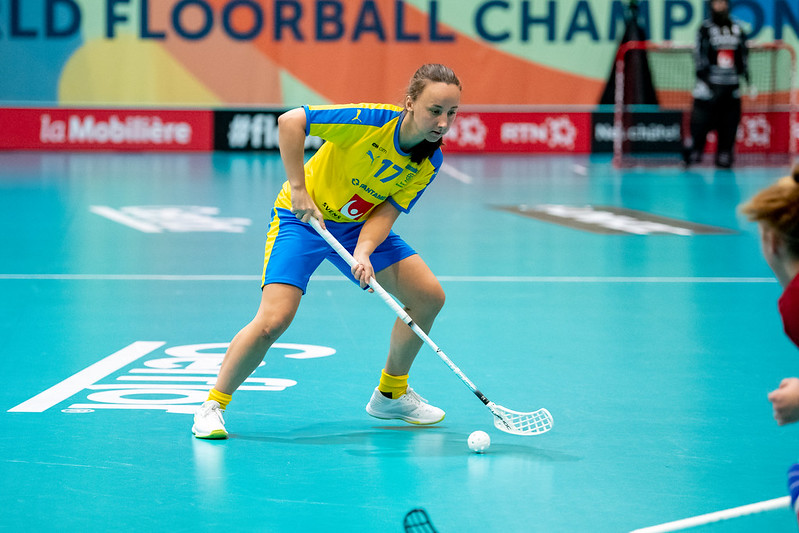
Second, the ball is much better protected when you have two hands on the stick. Opponents will be less able to tap it away from you, so your team will be able to keep possession and stay working on an attack.
Thirdly, your action speed is higher if you have two hands on the ball. If you decide to shoot, then all you have to do is… shoot. If you have one hand on the stick and you want to shoot, you have to perform two actions: add another hand, and shoot. This immediately increases the chance of the shot being blocked – it takes more time to shoot – and it is also easier for the opponent to know when they can expect the shot.
4b: The bonus tip about when you’re gonna play with one hand on the stick anyway.
Another bonus tip, tip 4B, is about playing with one hand. All right, all right… I just said you should have two hands on the stick, but make sure you keep your top hand on your stick at all times. If you’re a righty player (with the stick on your right and your left hand on top of the stick), then you always have your left hand on the stick. Lefty players (with the stick to the left of your body and the right hand on top of the stick) always have your right hand on the stick. Always keep this hand on the stick, at the top, and don’t switch hands.
The reason for this is that you can never act quickly when changing hands; a wrist shot out of nowhere is impossible because you first have to take over the stick again.
Always. Keep. Your. Top. Hand. On. The. Stick.
Okay?
Tip 5: Explode
I’ve mentioned it a couple of times: floorball is a dynamic, fast sport. If you’re faster than your opponent, you have the advantage, and ‘speed’ is not just about the pace of running.
Everything you do in the field takes time and if you do these actions faster than your opponent, he has a problem! Therefore, make sure that you do every action with conviction. This goes without saying with a counter, but even if you run back to the defense, try to protect the ball, shoot at goal – even if you go back to the bench to swap: explode!
In that one minute you’re on the pitch, you’re expected to give everything you’ve got. Combine this with tip 1: Never stand still, and tip 4: Footwork, and you’ll feel the golden combination. Nobody can stop you anymore!
Now what?
To really become as good as Alexander Galante Carlström, Anna Wijk or Jan Zaugg applies above all: practice, practice, practice.
And more practice, probably.
And after that, there’s… practice.
But next to this, these five basic pieces of advice can always come in handy!
Which tip is most useful for you? Or do you have additions of your own? Let me know, via our social media or Patreon!
[/ppp_patron_only]
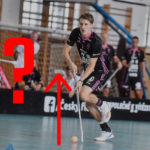
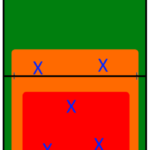



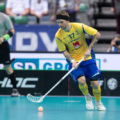
No Comments
Leave a comment Cancel